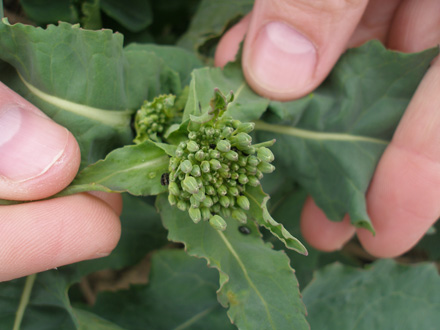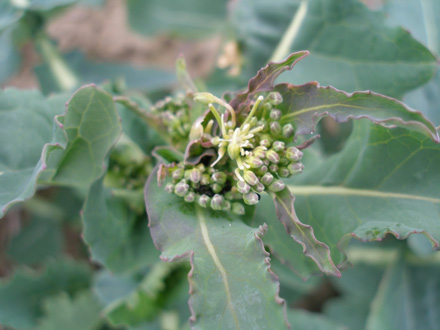
Pollen Beetle are on the move and, with oilseed rape crops rapidly pushing into green bud, the majority of fields that are backward or frost and pigeon damaged are going to be susceptible to attack.
Syngenta monitoring of oilseed rape crops around the country, for the Yellow Peril sclerotinia risk assessment web site, has found Pollen Beetle activity this week in some of the more forward fields from southern counties, through the east, north and into Fife in Scotland. Treatment thresholds have been reached in a number of crops. The primary threat is that if beetle numbers build on these forward crops now, they will move to feed on the later crops as they come into green bud.
Syngenta Oilseed Rape Manager, Nick Watson, highlights that strong, advanced crops can withstand Pollen Beetle thresholds of up to 15 beetles per plant. "But where crops are backward or damaged – which is the vast majority of cases this year – the recognised threshold has been cut to just five beetles per plant."
Mr Watson recommends application of Hallmark with Zeon Technology when thresholds are reached, but growers need to be monitoring rapidly growing numbers and be ready to react early to get around the crop with the sprayer if the threat builds on backward crops. The recommended rate for Pollen Beetle is just 75ml/ha, with application using the angled Syngenta Hawk Nozzle advocated to give maximum coverage of foliage and achieve best possible results.

Whilst there were some reports of pyrethroid resistance in the Pollen Beetle population in 2006 and 2007, the affected areas were limited to pockets in coastal regions of the south east and eastern counties. Monitoring in 2008 showed no further development of resistance in the UK oilseed rape area. The majority of Pollen Beetle in the UK remain susceptible to pyrethroid including Hallmark Zeon.
"Hallmark Zeon is a far lower cost treatment than resorting to thiacloprid," advises Mr Watson. "The advice from the independent insecticide resistance action group is that growers only need to use alternative treatments where local resistance is known to be an issue, or where they suspect the efficacy of pyrethroids has been reduced."
Growers and agronomist can see the latest position of crop development and Pollen Beetle activity on the Yellow Peril web site at www.syngenta-crop.co.uk
